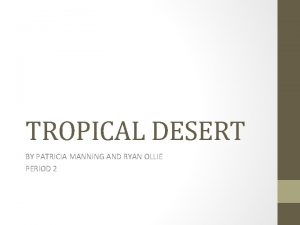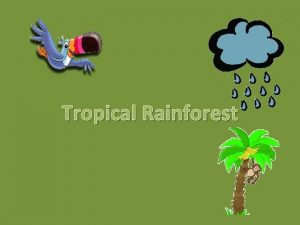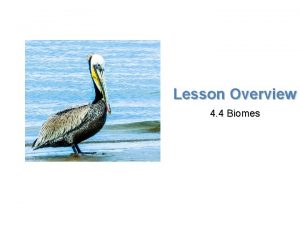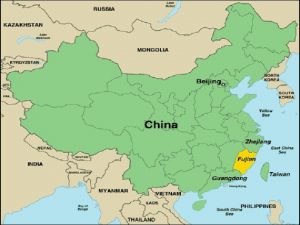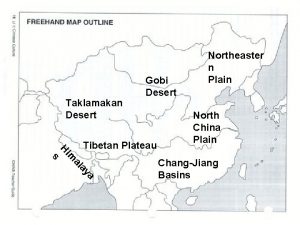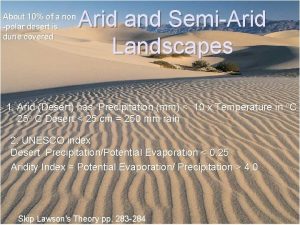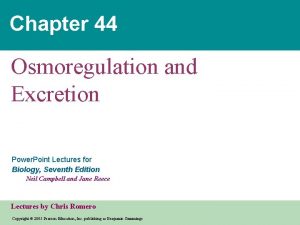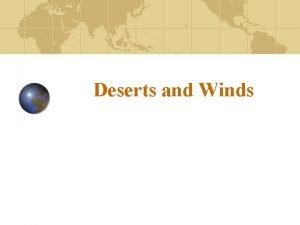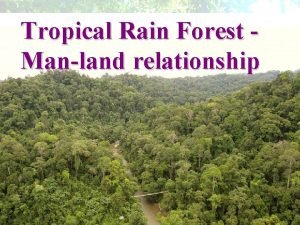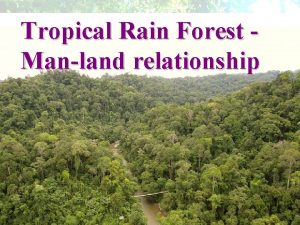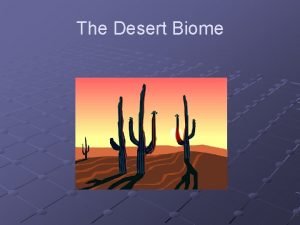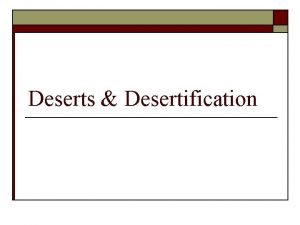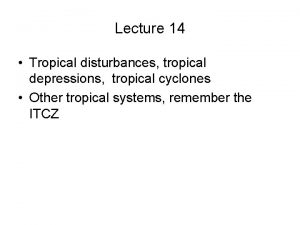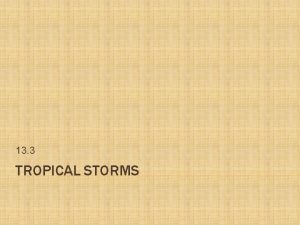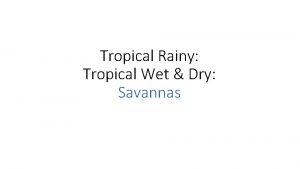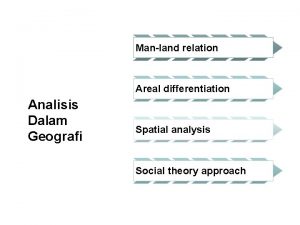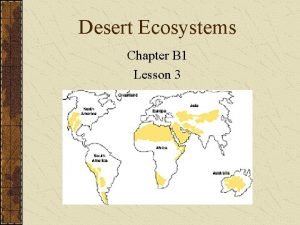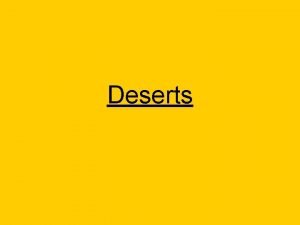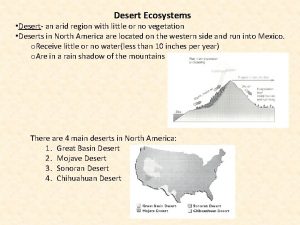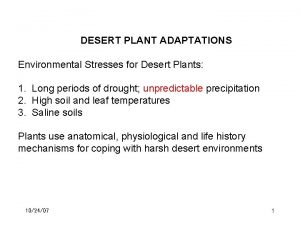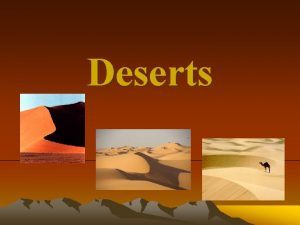Geography ManLand Relationship Tropical Desert Nomadism Nomadism is





















- Slides: 21

Geography Man-Land Relationship —Tropical Desert Nomadism

Nomadism is the movement of the nomads Who are in high mobility in desert to search Areas for herding animals with no fixed home It is necessary for them to move when the Supply for water or other source of food is exhausted

Nomads in different places

Herding animals ( Donkey , goat , sheep , camel , cattle , horse etc………)

The rise and spread of Pastoral Nomadism A. It is probable that nomadic societies were prevalent by 1500 B. C. E. In the millennia that followed, pastoral nomadism varied according to the type of domesticated(馴養)animal chosen as the primary source of livelihood. B. It is also probable that pastoral nomadism originated among people who had been driven with their herds from the fertile river valleys of the civilized cores or among hunting-and-gathering bands that captured domesticated livestock in raids( 劫掠)on agricultural villages

Transhumance(畜牧季移 ) The nomads move their herds to other places on a seasonal basis in order to obtain grass and water. This is called transhumance



Nomadic Habitation

Nomadic herding and pastoral farming Pastoral farming involves the breeding and herding of animals. It can be in the form of sedentary(定居) or nomadic. The nomadic herding is only one type of pastoral farming. it is not the same as pastoral farming Rangelands(牧場)

Recent changes A) The number has decreased e. g. Egypt 73, 000 in the end of 19 th century → 45, 000 now Reason for the changes: ‧increased “pull” job opportunity ‧higher urban standards ‧”push” by reduction of natural grazing ground ‧the pressure by governments B) Nomadic life is gradually dying out ‧turn to sedentary life by engaging more ‧change from traders to transport ‧become laborers in oil companies , construction firms and industry C) Government bring pastoralist into broadly-based communes ‧such as the Red Star Commune in Xing Jiang

D) Raising livestock is still major activity E) Raiding is now greatly declining F) Increased earning G) Standard of living has been raised H) More facilities → more technological advances + other development I) Old ways of using herds of animals ‧prevailed in many desert areas until the beginning of present century J) The caravan animals of nomads become obsolete. ‧camel, one the proud “ sheep of the desert “ is main sources of meat supply

Case studies: Sahel Location: • the southern edge of the Sahara Desert. • 5500 km long and 450 km wide. • Senegal, Mauritania, Mali, Chad, Sudan, Nigeria, Niger Physical environment: • • Type of climate: Tropical semi-arid climate Temperature: High throughout the year Annual rainfall: Between 300 -600 mm, unreliable Natural vegetation: Grassland shrubs

Pastoral farming • Pastoral system: Nomadic Transhumance

• They rear livestock and move from one place to another to look for water and pasture. Herds: Camels, goats, sheep, donkeys, cattle…

Daily work • • • Provide water for their livestock Collect firewood for fuel Milk the young herds Process dairy product Mate their livestock

Maintain the ecological balance • Migration of herds Advantages: Herds can be grazed The old patch(田地) can be left fallow • Keeping a variety of animal species Advantages: Different animals species will take up different plant species Have a rich mix of dairy products at different times • Controlling the number of animals in the herd Advantages Herds can be grazed while vegetation can grow reasonably well

Ecological effects • trampling • overgrazing • Misuse of water resources

How can we sustain a balanced environment in the Sahel? 1. Improved grazing practices • Improved grazing technologies • Proper grazing management • Early warning system of drought and famine 2. Reduce pressure on land • Birth control • Create jobs for herders by investing in infrastructure


The end
 Is pastoral nomadism ldc or mdc
Is pastoral nomadism ldc or mdc The soldier decided to desert his dessert in the desert
The soldier decided to desert his dessert in the desert Desert biomass pyramid
Desert biomass pyramid Primary consumers in the tropical rainforest
Primary consumers in the tropical rainforest Difference between rm and crm
Difference between rm and crm Relationship between political science and geography
Relationship between political science and geography Stateless nation
Stateless nation Ap human geography political geography frq
Ap human geography political geography frq 5 themes of geography ap human geography
5 themes of geography ap human geography Shrubland biotic factors
Shrubland biotic factors Why is the saguaro cactus a keystone species
Why is the saguaro cactus a keystone species Desert d'amics de béns e de senyor
Desert d'amics de béns e de senyor Kunlun mts
Kunlun mts Thar desert
Thar desert Taklamakan desert
Taklamakan desert Nonpolar desert
Nonpolar desert What does this show
What does this show Abdominoplasty palm desert
Abdominoplasty palm desert Elite desert tasks
Elite desert tasks Why do desert animals have longer loop of henle
Why do desert animals have longer loop of henle Definition of desert
Definition of desert Under the rug chris van allsburg
Under the rug chris van allsburg


